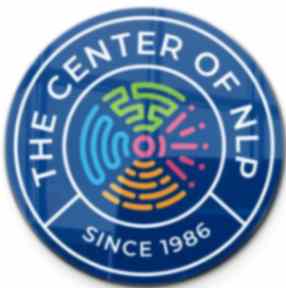CONTACT US [email protected]

Breaking Free from Negative Patterns: NLP Tools for Change
Introduction
Negative patterns can often hold us back from reaching our potential and experiencing personal growth. These patterns, whether they manifest as self-sabotaging thoughts, repetitive behaviors, or overwhelming emotions, can significantly impact our lives. However, by utilizing the power of Neuro-Linguistic Programming (NLP), we can effectively break free from these negative patterns and pave the way for positive change.
Understanding Negative Patterns
Negative patterns are recurring thoughts, behaviors, and emotions that hinder our progress and prevent us from living fulfilling lives. These patterns can stem from various sources, such as past traumas, learned behaviors, or limiting beliefs. Recognizing these patterns and understanding how they influence our thoughts, actions, and overall well-being is crucial.
The Power of Neuro-Linguistic Programming (NLP)
Neuro-Linguistic Programming, commonly known as NLP, is a therapeutic approach that focuses on the connection between our neurological processes, language, and behavioral patterns. NLP provides a toolkit of techniques and strategies to reprogram our minds, enabling us to break free from negative habits and cultivate positive change.
Identifying Negative Patterns
Before we can effectively address negative patterns, it's essential to identify and understand them. Here are three key aspects to consider when recognizing negative patterns:
Recognizing Thought Patterns
Our thoughts play a significant role in shaping our reality. Negative thought patterns, such as self-doubt, self-criticism, or catastrophizing, can limit our potential and perpetuate negative cycles. We can start challenging and reframing these patterns by becoming aware of them.
Analyzing Behavioral Patterns
Behaviors are a tangible manifestation of our thoughts and emotions. Negative behavioral patterns may include procrastination, self-destructive habits, or avoidance. By examining our behaviors, we can gain insight into the underlying patterns and make conscious changes.
Examining Emotional Patterns
Emotions are powerful indicators of our inner state. Negative emotional patterns like chronic anxiety, anger, or sadness can keep us stuck in unproductive cycles. We can break free from their grip by exploring the root causes of these emotions and developing emotional intelligence.
NLP Techniques for Breaking Negative Patterns
NLP offers a range of practical techniques for breaking negative patterns and fostering positive change. Here are some widely used methods:
Reframing
Reframing involves shifting the perspective on a situation or thought. By reframing negative thoughts into more positive or empowering ones, we can change our emotional responses and behavioral patterns.
Anchoring
Anchoring is a technique that associates a specific stimulus with a desired state. By consciously linking positive emotions or thoughts to a physical anchor (such as touching a particular finger), we can trigger that state whenever needed, breaking negative patterns.
Submodalities
Submodalities refer to the sensory qualities of our internal experiences. We can rewire our responses and create positive change by altering the submodalities associated with negative patterns, such as changing the interior images or adjusting the internal dialogue.
Pattern Interrupts
Pattern interrupts involve breaking the automatic sequence of negative patterns. Introducing unexpected or novel stimuli disrupts the way and opens up space for new possibilities and behaviors.
Timeline Therapy
Timeline Therapy focuses on exploring and revising our perception of past events. By reimagining negative experiences and reframing them within a more empowering context, we can release the emotional charge associated with those memories and break free from their influence.
Creating Positive Patterns
Breaking negative patterns is only half the battle. To sustain long-term change, replacing them with positive habits is crucial. This involves consciously cultivating empowering thoughts, behaviors, and emotions that align with our desired outcomes. We can create a more fulfilling and purposeful life by consistently reinforcing these positive patterns.
NLP and Self-Hypnosis
NLP can be integrated with self-hypnosis techniques to deepen the impact of change. Self-hypnosis allows us to access the subconscious mind, where many negative patterns reside. Combining NLP techniques with self-hypnosis can reprogram our subconscious beliefs and accelerate the transformation process.
Combining NLP with Other Therapeutic Approaches
NLP is a versatile approach that can complement various therapeutic modalities. Integrating NLP with techniques like cognitive-behavioral therapy (CBT), mindfulness practices, or positive psychology can enhance the effectiveness of the therapeutic process. This integrative approach provides a holistic framework for personal growth and transformation.
Break free from negative patterns and start your transformative journey now! Create awareness, commitment, and apply the NLP practical tools. Neuro-Linguistic Programming (NLP) equips you with robust techniques to identify, challenge, and change these patterns. By utilizing NLP, you can break free from negative habits and embark on a path of personal growth, self-empowerment, and fulfillment.
Learn more here: Centerofnlp.com
For inquiries and further information, kindly reach out via email to [email protected]
Check Out For more:
Neuro-Linguistic Programming for Effective Goal Setting and Achievement
Unleashing Your Creativity with Neuro-Linguistic Programming Strategies
FAQs
Can NLP help with specific phobias?
Yes, NLP techniques, such as desensitization and reframing, can effectively address specific phobias by reprogramming the associated negative patterns.
How long does it take to see results with NLP?
The timeframe for results can vary depending on individual circumstances and the complexity of the patterns. However, with consistent practice and application of NLP techniques, positive changes can often be experienced relatively quickly.
Can NLP be used for professional development?
Absolutely. NLP can enhance professional development by improving communication skills, enhancing confidence, and overcoming limiting beliefs that hinder success.
Is working with an NLP practitioner necessary, or can I learn and apply techniques independently?
Yes, NLP is the metaprogram of your language and only an experienced NLP practitioner can provide you the valuable guidance and support you need.
Are NLP techniques suitable for everyone?
NLP techniques can benefit a wide range of individuals, but ensuring they are used responsibly and within ethical boundaries is essential. It's recommended to consult with a qualified professional or practitioner to determine the appropriateness of NLP for specific situations.
Learn more here:
Or send email to: [email protected]
Copyright 1989 - 2024 | The Center of NLP © | All Rights Reserved

